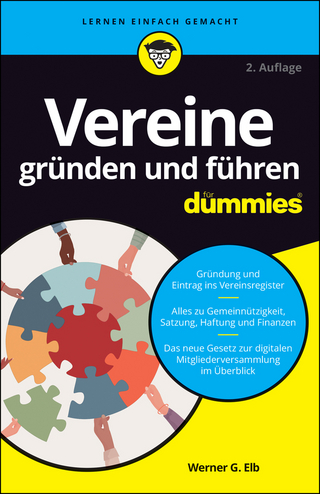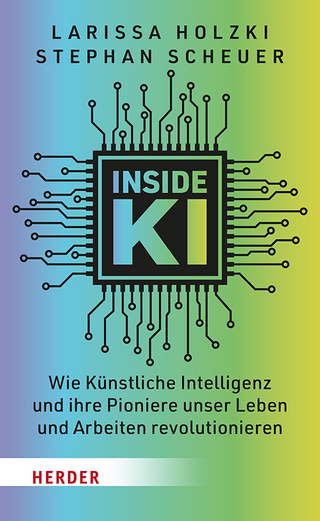
Organizational Learning Communities
Kogan Page Ltd (Verlag)
978-1-3986-1552-6 (ISBN)
Learning communities transform organizations through sharing knowledge, spearheading practice, solving problems, seeding innovation and supercharging development. So how can you develop a culture of learning in your organization?
Organizational Learning Communities answers this question and explains how and why this approach can improve individual employee performance and drive overall business results. Written by a leading voice in the learning profession, this book contains everything that Learning and Development (L&D) practitioners need to know to successfully embed learning communities in their organizations. Following the 7Cs model of Cause, Culture, Conditions, Cadence, Content, Contributions and Credit, the book establishes the key factors that underpin thriving learning communities as well as the benefits of social and collaborative learning in the company.
This practical guide establishes strategies to drive community impact and report success to stakeholders, drawing widely on evidence-based research and real-world examples. Each chapter ends with reflective questions to support transfer to the reader's context. This is essential reading for those involved in facilitating learning communities, or planning on pioneering one, to empower their organization's productivity and performance.
Andy Lancaster is Chief Learning Officer at Reimagine People Development consultancy, specializing in supporting, coaching and mentoring learning leaders and teams to create impactful development strategies and solutions, transform learning cultures and empower socialized learning communities. The former Head of Learning at the Chartered Institute of Personnel and Development (CIPD), Andy is a trusted thinker, commentator and inspiring speaker, renowned for his insights that have helped reshape the organizational learning landscape globally. He is the author of award-winning Driving Performance Through Learning, also published by Kogan Page.
Section - 01: What are the foundations for organizational learning communities?
Chapter - 01: Natural tendencies
Chapter - 02: Better together
Chapter - 03: Social learning theory - Bandura
Chapter - 04: Social constructivist and scaffolding - Vygotsky and Bruner
Chapter - 05: Situated learning theory - Lave and Wenger
Chapter - 06: Collective, collaborative, or cooperative?
Chapter - 07: The elusive 20
Chapter - 08: Community definitions
Chapter - 09: DNA of learning communities
Chapter - 10: Community dimensions
Section - 02: How are organizational learning communities impactful?
Chapter - 11: Sharing knowledge
Chapter - 12: Spearheading practice
Chapter - 13: Solving problems
Chapter - 14: Seeding innovation
Chapter - 15: Supercharging development
Section - 03: What are keys to facilitate effective organizational learning communities? The 7Cs model
Chapter - 16: Introducing the 7Cs model
Chapter - 17: Friction
Chapter - 18: Attraction
Chapter - 19: Ownership
Chapter - 20: Charters
Chapter - 21: Access
Chapter - 22: Sponsor-champions
Chapter - 23: Launch
Chapter - 24: Context and culture
Chapter - 25: Rituals
Chapter - 26: Psychology safety
Chapter - 27: Inclusivity and intersectionality
Chapter - 28: Altruism
Chapter - 29: Bias: Information and interpretation
Chapter - 30: Bias: Interaction and image
Chapter - 31: Groupthink
Chapter - 32: The spiral community
Chapter - 33: Balancing modes: Face-to-face, digital and hybrid
Chapter - 34: Levering physical spaces
Chapter - 35: Leveraging digital spaces: LMS and LXP
Chapter - 36: Levering digital spaces: Tools
Chapter - 37: Leveraging virtual spaces: Metaverse worlds
Chapter - 38: Ensuring accessibility
Chapter - 39: Rhythms
Chapter - 40: Cadence
Chapter - 41: Phases
Chapter - 42: Synchronous-Asynchronous
Chapter - 43: Shelf life
Chapter - 44: Curating assets
Chapter - 45: Creative activities
Chapter - 46: Coordinated campaigns
Chapter - 47: Curious questioning
Chapter - 48: Cultivating AI
Chapter - 49: Passivity to participation
Chapter - 50: Numbers
Chapter - 51: Relationship and contribution analysis
Chapter - 52: Working out loud
Chapter - 53: Task contributions
Chapter - 54: Social contributions
Chapter - 55: Dysfunctional contributions
Chapter - 56: Coordination and management
Chapter - 57: Recognition and reward
Chapter - 58: Roles
Section - 04: How can we demonstrate the impact of organizational learning communities?
Chapter - 59: Quantitative, qualitative, ROI and ROE
Chapter - 60: Participant reflection and the five cycles model
Chapter - 61: Leveraging narratives
| Erscheinungsdatum | 28.05.2024 |
|---|---|
| Verlagsort | London |
| Sprache | englisch |
| Maße | 156 x 234 mm |
| Themenwelt | Sachbuch/Ratgeber ► Beruf / Finanzen / Recht / Wirtschaft ► Wirtschaft |
| Wirtschaft ► Betriebswirtschaft / Management ► Personalwesen | |
| ISBN-10 | 1-3986-1552-8 / 1398615528 |
| ISBN-13 | 978-1-3986-1552-6 / 9781398615526 |
| Zustand | Neuware |
| Haben Sie eine Frage zum Produkt? |
aus dem Bereich


